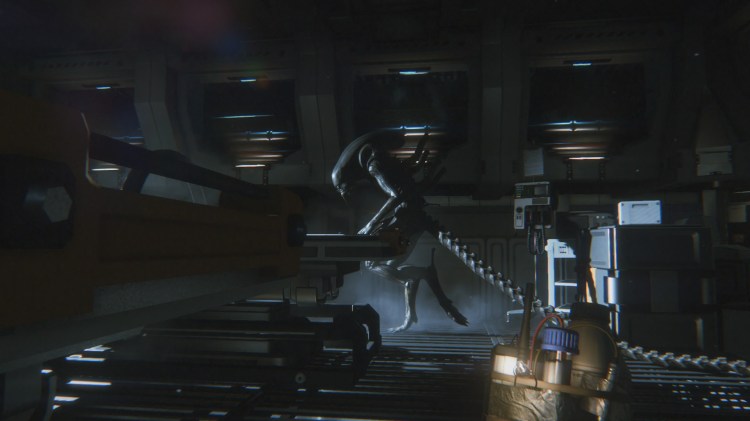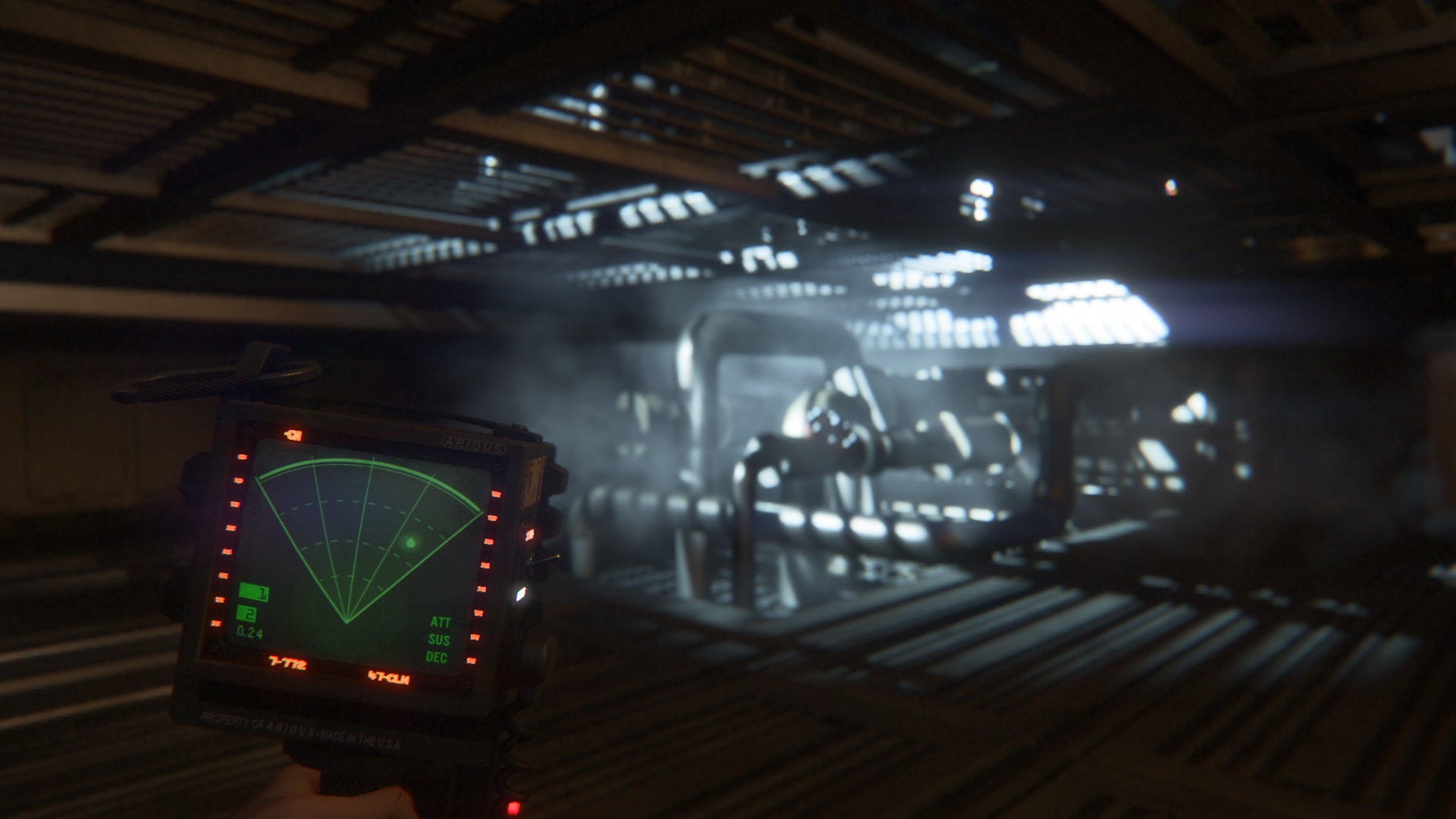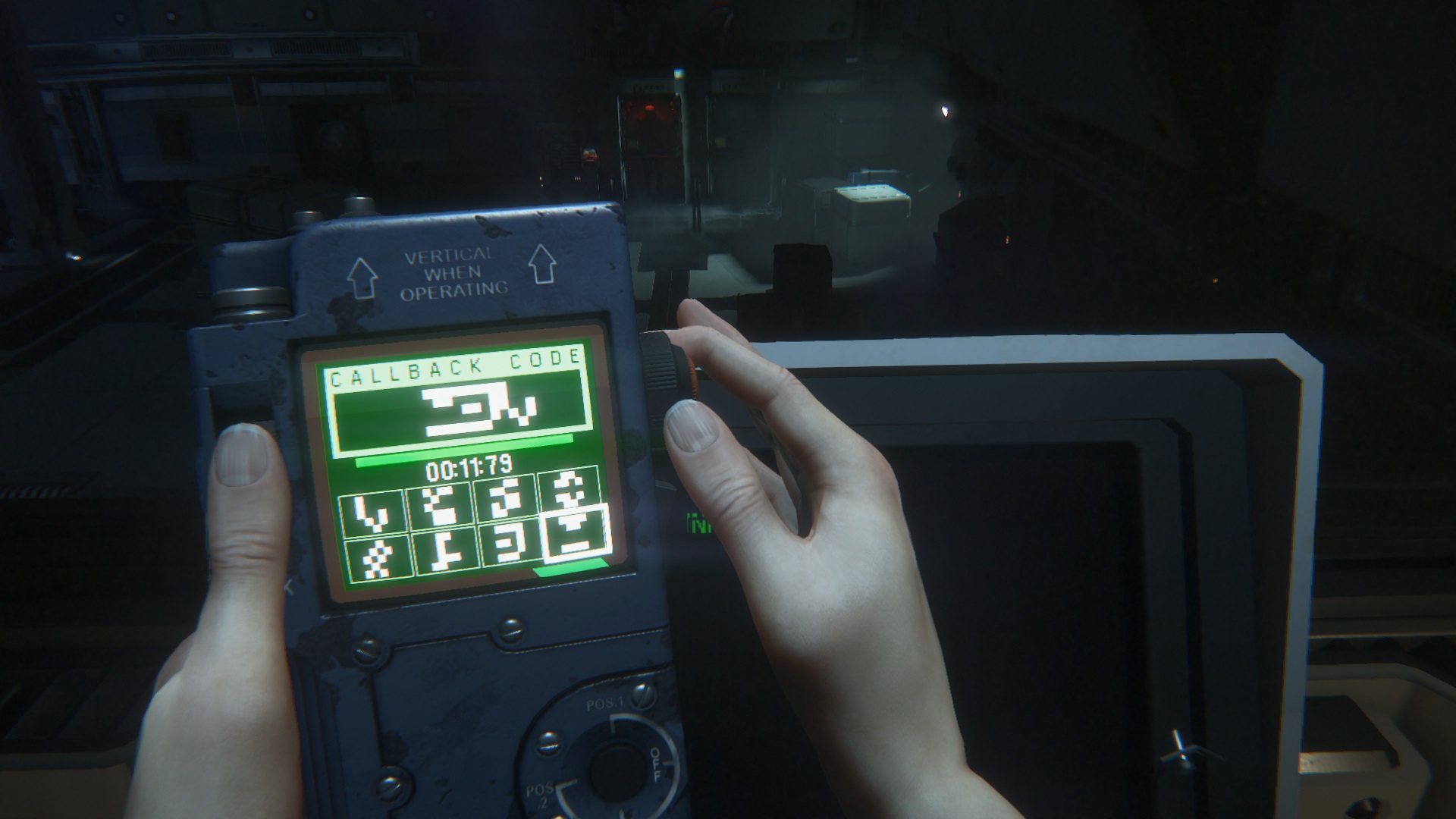Let me tell you about something I like to call the sweet science of hiding in lockers in Alien: Isolation.
It relies on timing and coordination. If you wait too long to hop into that nearby storage locker, a massive alien will see you and tear you to shreds. Staying in your deceptively safe compartment for a while is a great way to make the alien suspicious. Failure to lean back and hold your breath when prompted while the alien probes your locker door will result in the creature ripping you out and tearing you to shreds. Even if you jump in a locker at the perfect moment and execute any and all commands to perfection, the alien may still spot you, pull off the door, and — you guessed it — tear you to shreds.
If this is too vague, let me sum it up a little more clearly: Alien: Isolation is hard — very hard. It brought most of the 20 or so journalists at Creative Assembly’s Thursday press event in San Francisco to their knees at one point or another.
But it’s the reasons behind this intense difficulty that are the most interesting part of Alien: Isolation.
It feeds on players’ preconceived notions of exactly how a game and its characters should behave. We have all been conditioned over the last 20 years to expect certain features, but Alien: Isolation refuses to play along. Things that make sense everywhere else don’t work here.
The experience of rebuilding your expectations is a mixed bag. The fresh, challenging gameplay mechanics were exciting at first, but it loses its sharp edges after about the 80th death. The alien didn’t scare me when it attacked — it just annoyed me. It’s possible that doing something truly different could actually harm Alien: Isolation in the long run.
The traditional survival-horror setup
In Alien: Isolation, players take on the role of Amanda Ripley, the daughter of Alien protagonist Ellen Ripley. It’s been 15 years since Ellen’s brush with an alien, and Amanda is looking for clues as to her mother’s whereabouts and the fate of Ellen’s ship, the Nostromo. Amanda is transferred to the Sevastopol space station, where yet another 9 foot-long killing machine has taken up residence.
I felt comfortable taking control of Amanda. I had all of the usual survival tools: a flashlight, radar (in the form of a portable motion sensor), a map, and a sparse selection of weapons and supplies.
The world looked exactly as I expected it to. The dark, low-fidelity look of the space station triggered two familiar thoughts in my brain: This is Alien, and this is a survival horror game.
Isolation’s creative lead, Al Hope, told me in an interview that this was exactly the point.
“We took our cues from the first film, which really downplays the sci-fi in favor of a much more mundane, tactile world. I mean, people are still traveling through space and going into stasis and such. It’s definitely in the future, but there’s no sense that you are going to find this massive sci-fi gun that will solve all your problems, like in Star Wars or Star Trek,” Hope said. “They establish this in the first film, and I think it just naturally feeds into the horror.”
Nevertheless, the first time I encountered the alien, I blasted away at it with my revolver. I know the rules: This thing can’t die. If I could shoot it, the game would be over in 10 seconds. But that’s how I have been groomed to solve problems in today’s video games, so I gave it a try.
And it eviscerated me.
OK, I’ve learned my lesson. It’s going to take a little more finesse to make it past this creature. I will have to hide and utilize my tools properly to escape.
Now that you’re settled in, it’s time to crush your soul
I tried using everything in Amanda’s arsenal to confuse my foe. I threw a smoke bomb and attempted to walk past it. As it turns out, the smoke bomb blinds me but doesn’t really bother the xenomorph (that’s a fancy name for Alien’s alien) bent on killing me. It stuck a spine through my chest as I tried to sneak past.
The next gadget up was the noisemaker. I threw it, and the alien ran toward the noise. I walked triumphantly down the necessary corridor only to get that same spine in the chest. The alien checked out my noisemaker for a second or two, but he had wheeled around and spotted me as soon as I made my move.
I tracked down Hope again to ask him what gives.
“The most important thing we wanted to do was get the alien right,” Hope said. “He’s the star of the show. We wanted his behavior to match that of the original alien’s, and we spent quite a bit of time animating and matching the sound to his movements. If you alert him but break line of sight, he usually won’t attack — usually. He will definitely investigate your area though, even if you use a tool.”
That’s when it hit me. If this monster’s creator doesn’t know where it’s going, I have no chance.



